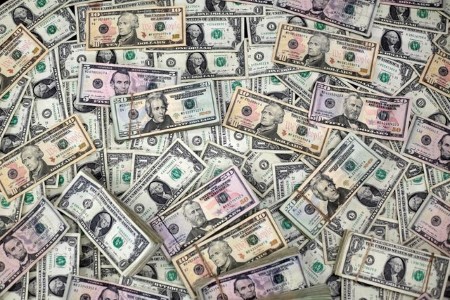




Quarterly Economic Growth Release: More BSP cuts to come
 DOWNLOAD
DOWNLOAD

Monthly Economic Update: Fed catches up
 DOWNLOAD
DOWNLOAD

Inflation Update: Steady and mellow
 DOWNLOAD
DOWNLOAD


US yields rise as tariff outlook outweighs tame inflation

NEW YORK – US Treasury yields rose on Tuesday as lower-than-expected April inflation data overshadowed expectations that tariffs will fuel higher prices in the coming months, reinforcing bets that the Federal Reserve will take its time resuming its easing cycle.
The benchmark 10-year yield, which initially fell after the Labor Department released its April Consumer Price Index, was up 2.2 basis points (bps) at 4.479% in late afternoon trading. The two-year yield, which typically tracks the interest rate outlook, was little changed at 4.006%.
Although the headline numbers showed limited immediate impact from the Trump administration’s sharp tariff rises announced last month, prices of certain goods such as furniture and audio and video products rose due to the import levies, data showed.
The consumer price index increased 0.2% last month after dipping 0.1% in March, the first decline since May 2020. Economists polled by Reuters had forecast the CPI would rise 0.3%. In the 12 months through April, the CPI climbed 2.3% after rising 2.4% in the 12 months through March.
Core CPI inflation increased 2.8% on a year-on-year basis in April after rising 2.8% in March.
Analysts still expect inflation to pick up in the coming months. “Some of the positive aspects that contributed to a lower April CPI do not seem sustainable, such as the drop in used vehicle prices,” said Andy Schneider, senior US economist at BNP Paribas. In April, wholesale used vehicle prices rose, but prices for final buyers fell.
Inflationary pressure will persist even as the US-China deal made over the weekend showed both countries want to avoid a trade war. “Tariffs are still going to be significantly higher than they were in January,” Schneider added.
Markets estimate the Federal Reserve will not cut interest rates until later in the year, potentially twice in 2025. The first 25 basis points cut is expected at its September meeting, according to CME’s FedWatch tool. Schneider believes the Fed will not be able to cut rates this year.
“The report basically indicates that the Fed needs to be very cautious and that the stand that they have taken is probably the right course for now,” said Brian Jacobsen, chief economist at Annex Wealth Management.
As trade war fears recede, investors are expected to focus on budget and tax cut legislation discussions in Congress. Public debate began on Tuesday in the US House of Representatives. Congress’ bipartisan Joint Tax Committee estimates the tax cuts would cost USD 3.72 trillion.
“The CPI was softer than expected, which is good news, but markets are still cautious and looking for clarity on the longer-term policy path,” said Subadra Rajappa, head of US rates strategy at Societe Generale. Stocks got more of a boost from the inflation report than the bond market, she noted.
A closely watched part of the US Treasury yield curve measuring the gap between two- and 10-year notes, seen as an indicator of economic expectations, steepened 46.9 bps, suggesting that the Fed is on track to cut interest rates this year.
US yield curves typically steepen in an easing cycle, with the front end, such as the two-year tied to Fed rate cuts.
The breakeven rate on five-year US Treasury Inflation-Protected Securities (TIPS) was last at 2.395% after closing at 2.35% on May 12.
The US dollar 5 years forward inflation-linked swap, seen by some as a better gauge of inflation expectations due to possible distortions caused by the Fed’s quantitative easing, was last at 2.477%.
(Reporting by Tatiana Bautzer; Additional reporting by Chuck Mikolajczak; Editing by Andrew Cawthorne, Nick Zieminski, Susan Fenton, and Richard Chang)
This article originally appeared on reuters.com





 By Reuters
By Reuters